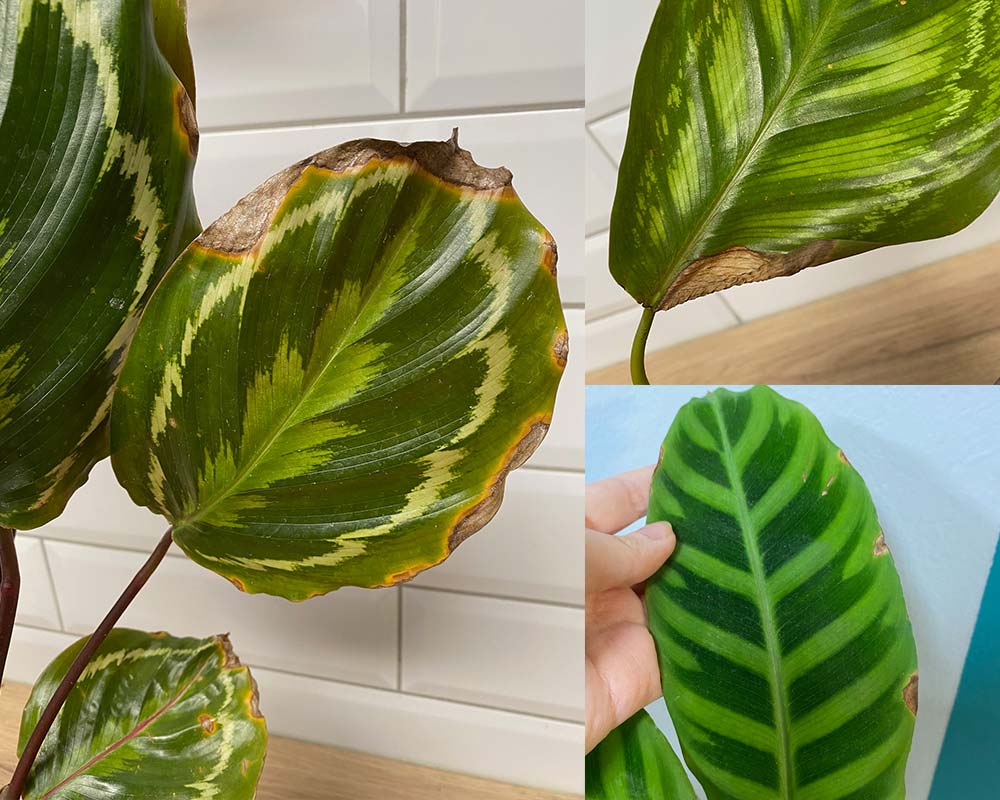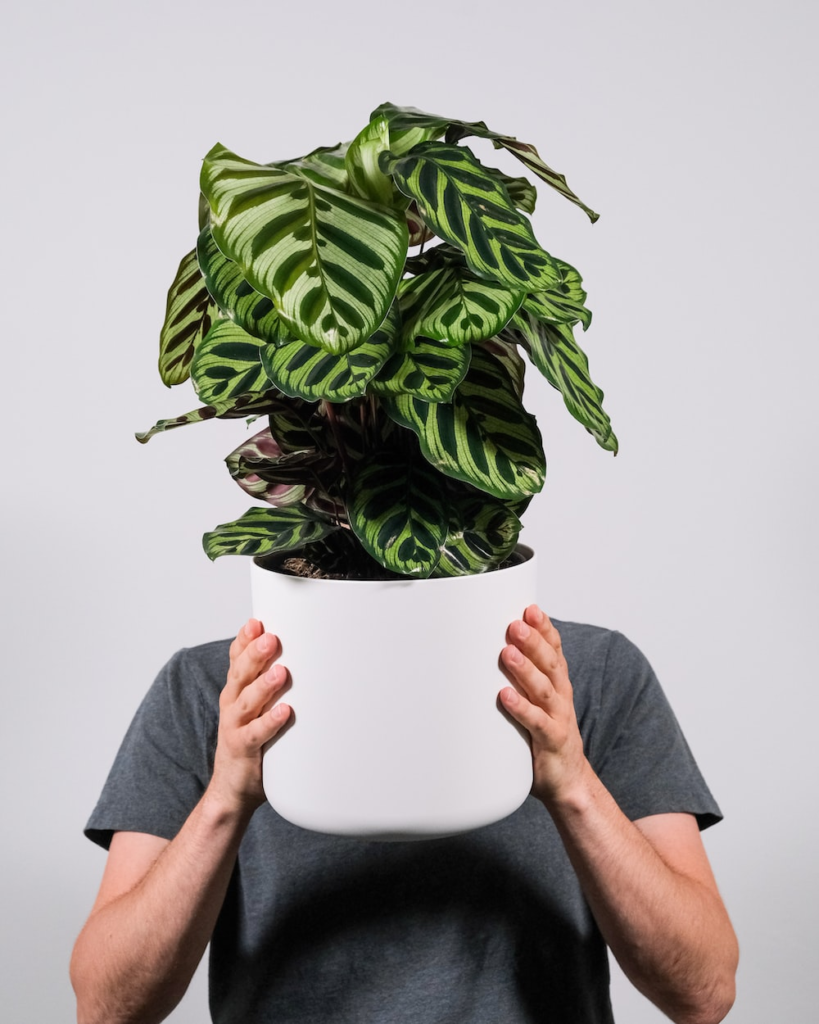Introduction
Sometimes houseplant lovers face the problem of calathea with dry, curling leaves.
Contents

These tropical plants are known for their lush foliage and attractive leaves, making them very popular houseplants. To care for them successfully, we must know what their most common characteristics and needs are.
That is why, in this article, we will explore the reasons behind this problem, and the ways to treat it so that our Calathea returns to its healthiest and most attractive state.
Calathea Dry and Curling Leaves: identifying the problems
Calatheas with dry, curling leaves are a sign that something is out of balance in the plant’s environment. Below, we present a guide to the possible causes and solutions to this problem:
Humidity conditions
Dryness of the leaves can occur due to a lack of humidity, causing the leaves to suffer and become increasingly harder and drier. You can increase the humidity of the plant:
- Place a tray of water near or under your Calathea, without submerging it. As the water evaporates, the humidity of the substrate will increase.
- Use a humidifier to raise the humidity in the environment. This will reduce water stress that causes leaves to curl and dry out.
- Spray the plant with a spray to keep it moist. This will also prevent it from accumulating dust and other substances on the tips of its leaves.

Incorrect location and inadequate lighting
Sometimes moving the plant to a more suitable location can be the solution for its leaves. Check that the conditions are adequate with the following key points:
- Place your plant in a location with bright indirect light.
- Avoid direct sunlight that can damage the leaves, causing burns on the surface.
- In very hot and dry climates, sunlight can deteriorate the condition of the calathea and cause dryness of its leaves.

Irrigation
These are some tips to water a calathea ideally:
- Water with drinking water or rainwater to avoid causing excess lime in the substrate. Tap water can add harmful minerals.
- Being a tropical plant, calathea likes its soil to be constantly moist. Do not let the substrate dry out before watering it again.
- Avoid letting the substrate be wet or waterlogged, this could also damage it.

Temperature
- Try to ensure that the temperature does not exceed or fall below the limits: 18º – 25º C. Thus, you will recreate the tropical environment in which calathea thrives best.
Pests
If the leaves of your calathea, in addition to being dry and brittle, also begin to turn yellow, it is possible that they have a pest. The pests that most affect calathea are red spiders and mealybugs.
Calathea: dry leaves at the tip
A calathea with dry leaf tips, even on new leaves, is an indicator that humidity may be inadequate.
- If humidity is low, it may look like this because the plant is struggling to stay healthy and hydrated.
- If the plant is overwatered, it is possible that some of the plant’s roots have rotted, causing it to have difficulty absorbing nutrients.
The most common thing is that the plant needs more frequent watering, since these plants require abundant moisture. However, it can also be beneficial to check the condition of the roots if you consider that the watering is already adequate and is not working.

What to do with dry leaves?
Cathalea does not require extensive pruning, but it is beneficial to remove any dry or withered leaves it may have. Therefore, the best thing we can do to take care of our plant is to remove the leaves that are irreversibly damaged, so that the plant can produce new, stronger and healthier leaves.

Calathea: fallen leaves
If your calathea has drooping leaves, you are most likely facing one of two situations:
- Low temperatures: when the ambient temperature decreases, the leaves of the cathalea may suffer and lose strength, causing them to droop more than normal.
- Excess water: When they receive too much water, the leaves of the plant may look more droopy or sad. To solve this, simply let the substrate lose a little moisture before watering again.
Conclusion
Calatheas are beautiful and exotic plants, but they are also sensitive and can show weaknesses when not cared for properly.
By following these guidelines and paying attention to its needs, you can keep it healthy and enjoy its beauty inside your home. Remember that constant care is key to preventing future problems of dry and curling leaves in your Calathea.
